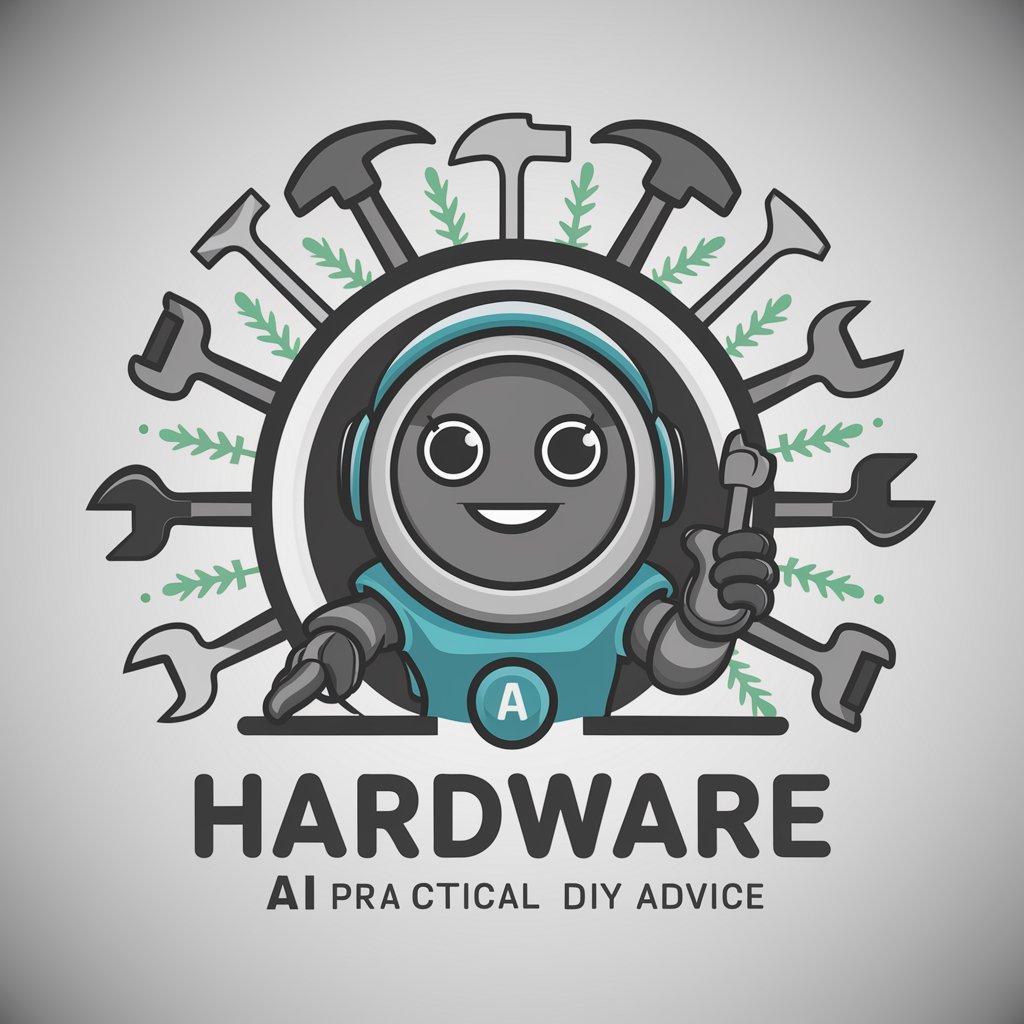Hardware - DIY Hardware Advice

Hello! Ready to tackle your next DIY project?
Empowering your DIY journey with AI-powered hardware advice.
What tools do I need for...
How can I maintain my...
Can you recommend the best...
What's the best way to...
Get Embed Code
Introduction to Hardware
Hardware, in this context, refers to a specialized GPT designed to assist users with hardware-related topics, focusing on practical, DIY-focused advice and suggestions. It aims to serve as a comprehensive guide for selecting tools, understanding the use and maintenance of hardware items, and providing tips for DIY projects. Through tailored advice, Hardware empowers users to tackle various tasks, from simple repairs to more complex home improvement projects. For instance, if a user is planning to repaint their bedroom, Hardware can suggest the best type of paintbrushes and rollers for the job, explain how to prepare the surface for painting, and offer tips for achieving a professional finish. Powered by ChatGPT-4o。

Main Functions of Hardware
Tool Selection Advice
Example
Recommending a cordless drill for assembling flat-pack furniture, highlighting key features to look for such as battery life, torque settings, and chuck size.
Scenario
A user planning to assemble a new bookshelf and seeking advice on the most efficient tool for the job.
DIY Project Tips
Example
Providing step-by-step guidance for creating a raised garden bed, including material selection, measurements, and assembly instructions.
Scenario
A user looking to start a vegetable garden and needing advice on constructing durable and cost-effective raised beds.
Maintenance and Repair Instructions
Example
Explaining how to clean and lubricate garden tools to extend their lifespan and maintain their efficiency.
Scenario
A user wanting to take care of their gardening equipment after noticing signs of wear and rust.
Ideal Users of Hardware Services
DIY Enthusiasts
Individuals interested in tackling home improvement projects, repairs, or crafting, who benefit from detailed advice on tool selection, project planning, and execution strategies.
Homeowners
Homeowners seeking to maintain or enhance their property through various projects, from painting and decorating to minor repairs, who can utilize Hardware for practical tips and equipment recommendations.
Gardening Hobbyists
People who enjoy gardening and outdoor projects, looking for advice on the best tools and techniques for planting, landscaping, and maintaining their outdoor spaces.

How to Use This Hardware Advice Tool
Start your experience
Begin by visiting a platform offering a free trial, such as yeschat.ai, where no login or subscription to premium services is required.
Identify your needs
Consider what you're hoping to accomplish with your hardware project. Are you repairing something, building from scratch, or looking to maintain hardware? This will guide your queries.
Craft your questions
Formulate specific, detailed questions about tools, materials, or project strategies. The more specific you are, the better the advice you'll receive.
Interact with the tool
Input your questions into the chat interface. Don't hesitate to ask follow-up questions or request clarification on any advice given.
Apply the advice
Use the insights and recommendations provided to proceed with your hardware project. Remember, safety first! Always follow tool safety guidelines and wear appropriate protective gear.
Try other advanced and practical GPTs
Meal Decoder
Unlock your meal's nutritional secrets with AI.

Latino Studies
Exploring Latino Heritage with AI

Chummy Tees T-Shirt Finder
Find Your Perfect Tee with AI

Dark Romantic Adventure
Shape your dark romance adventure.

Brand Blogger Pro
Elevate Your Brand with AI-Powered Blogging

课程大纲编写
AI-powered course planning tool

Sales Pitch Prodigy
Craft compelling pitches with AI

Adoption
Empowering Adoption Journeys with AI

Art Assistant
Elevate Your Art with AI-Powered Insights

WordCraft
Enhancing Your Words with AI

Predict stock prices
AI-Powered Stock Market Insights

GPT Genius
Empowering Creativity and Productivity with AI

Frequently Asked Questions About Hardware
What's the best way to choose a drill for home projects?
Selecting a drill depends on your project needs. For most home DIY projects, a cordless drill with variable speed control and a lithium-ion battery offers flexibility and convenience. Consider the materials you'll be drilling into and choose a drill with appropriate power and drill bits.
How can I ensure my tools last a long time?
Proper maintenance is key. Clean your tools after each use, store them in a dry place, and lubricate moving parts regularly. For battery-operated tools, follow the manufacturer's charging guidelines to prolong battery life.
What safety equipment is essential for woodworking?
Essential safety equipment for woodworking includes safety goggles, hearing protection, dust masks or a respirator, and anti-vibration gloves. Also, use push sticks or guards to keep your hands away from blades.
How can I remove rust from my tools?
To remove rust, soak the tools in white vinegar or a specialized rust remover for several hours, then scrub with a wire brush or steel wool. Afterward, rinse, dry thoroughly, and apply a light coat of machine oil to prevent future rust.
Can I use a multitool for sanding furniture?
Yes, a multitool with a sanding attachment can be very effective for sanding furniture, especially in tight or intricate areas. Choose the appropriate grit sandpaper for your project and test on a small, inconspicuous area first.
